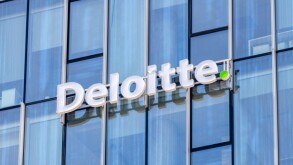Generally, a gain realised by a non-resident of Canada on the sale of shares of a corporation that derive more than 50% of their value from Canadian real property (CRP), being real properties or resource properties situated in Canada, at any time in the 60 months preceding the sale is subject to tax in Canada. Such shares are known as "taxable Canadian property" (TCP). Exceptions exist for holdings of shares listed on a designated stock exchange where the holder owns less than 25% of any class of shares of the issuer and under the provisions of certain tax treaties. On May 1 2017, the Canada Revenue Agency (CRA) released a Technical Interpretation (TI) (2015-0624511I7) describing the approach that should be followed to make the 50% determination if the property of the corporation (Parentco) includes shares or debt of a wholly-owned subsidiary corporation (Subco). Although the TI addresses a prior version of the TCP definition, the comments appear to be applicable to the current definition, which employs essentially identical language relating to derivation of value.
The first step is to determine the proportion of the aggregate fair market value (FMV) of all of Subco's property that derives its value from CRP. The 'gross asset' method should be followed, whereby the FMV of Subco's property is determined without taking into account liabilities (intercompany or otherwise).
The 'proportionate value' method should then be followed to determine the amount of the FMV of the shares of Subco that derives its value from CRP. This amount is equal to the FMV of the shares of Subco multiplied by the proportion of the FMV of Subco's total gross assets that is derived from CRP. If this proportion is 50% or less, that is the shares of Subco are not TCP, and the shares of Parentco are not listed on a designated stock exchange, then no portion of the value of Subco's shares would be considered to derive its value from CRP.
According to the TI, when determining the FMV of the shares of Subco for purposes of the foregoing calculation, the FMV of loans made by Parentco to Subco should generally be ignored as separate assets and the amount of such loans should increase the FMV of the shares of Subco held by Parentco. Such loans to Subco should not be considered separate property of Parentco in applying the 'gross asset' method to Parentco. This is intended to achieve the same TCP outcome for Parentco as if it had capitalised Subco entirely with equity instead of a combination of equity and debt. Typically, the FMV of loans made by Subco to Parentco should decrease the FMV of the shares of Subco held by Parentco and, correspondingly, should not be considered property of Subco in applying the 'gross asset' method to Subco.
Once the amount of the FMV of the shares of Subco that derives its value from CRP has been determined, this amount is added to the FMV of any other CRP of Parentco. The 'gross asset' method should then be followed to determine whether the shares of Parentco are TCP.
The TI describes the treatment of other situations including multi-tiered structures and back-to-back loans to a subsidiary through a sister corporation. The possible application of the general anti-avoidance rule to structures using intercompany financing to manipulate TCP status is also noted. Not included in the TI are the CRA's views on the treatment of intercompany debt in relationships other than a parent and its wholly-owned subsidiary.

|

|
Bruce Sinclair (bruce.sinclair@blakes.com) and Matthew Weaver (matthew.weaver@blakes.com), Vancouver
Blake, Cassels & Graydon LLP
Tel: +1 604 631 3382 and +1 604 631 4187
Website: www.blakes.com










